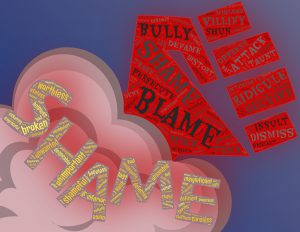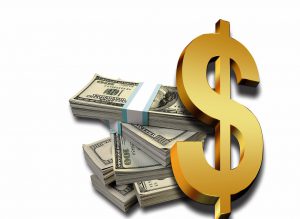What keeps you up at night? The stress of your workday, the effects of inflation on your wallet, the fight you had with your partner, or your kid’s problems at school? Or is it something even bigger than all of those things? Bigger – as in, as big as the whole Earth? Maybe, with all of the dire news about the climate that’s constantly popping up in your newsfeed, you’re feeling the weight of the world, and what humans are doing to it, on your shoulders, and it’s doing a number on you. If so, you’ve probably been hit with what’s known as climate anxiety – so, with all of the very real and very serious effects of climate change, how can we even start to wrap our heads around it, and cope with this anxiety?
What Is Climate Anxiety?
Simply put, climate anxiety, also known as solastalgia, eco-anxiety, environmental distress, or ecological grief, is distress or anxiety related to worries about the effects of climate change. Or, to put it less simply, the American Psychological Association (APA) defines it as“the chronic fear of environmental cataclysm that comes from observing the seemingly irrevocable impact of climate change and the associated concern for one’s future and that of next generations.”
The APA does not consider climate anxiety a mental illness – not yet, anyway – but it is very real. And not only that, but it doesn’t even necessarily only affect those who have already come in direct contact with the effects of climate change (the mental health effects they have felt are also a whole other story). In other words, you don’t have to have lost your house to a supercharged hurricane or an intense wildfire to feel like the world is quite literally closing in on you.
In fact, the number of people that are experiencing climate anxiety is huge: a study by the APA suggests that more than two-thirds of Americans experience at least some form of it. And, unfortunately, it’s taking an even greater toll on our young people. A study published in The Lancet found that 84% of children and young adults ages 16 to 25 are at least moderately worried about climate change, and 59% are very or extremely worried. That makes sense, considering that they will most likely inherit some serious problems if we keep going down the path we’re on.
Are You Climate Anxious?
So does all of this sound familiar? Think you’re suffering from climate anxiety? You might be feeling things like: 
- Guilt or shame surrounding what you view as your effect on the environment
- Intense worrying about how your actions will affect future generations
- Anger that not more is being done
- Grief, which you might experience in the classic stages: according to Phoenix Smith, an ecotherapist, “It can be denial at first, and then you may have some fear and anger and then sadness.”
- Chronic stress, which can lead (especially in children) to depression and anxiety, or a feeling of suffocation
- Feelings of hopelessness, helplessness, or even fatalism
Of course, some of these feelings can be related to other mental health issues, or to other stressors in your life, but if you feel like climate change and its effects are what’s giving you your special brand of anxiety, it’s time to find a way to cope. Unfortunately, we’re in this fight for our planet’s future for the long haul, but in the here and now, you can try to deal with your climate anxiety like other anxiety-related issues, by working on your resilience, recognizing your feelings, sitting with them, and hopefully, taking some action. After all, the source of this anxiety is pretty consequential for all of us, so the action you take to calm yourself can also make a difference for everyone.
How Can You Cope?
Yes, things seem bad, but now’s the time to take a deep breath and get ourselves together so we can work on this. Start with yourself, and try the following ways to cope:
Feel all the feels
Negative feelings are necessarily going to be a part of a crisis, whether you’ve experienced the crisis first-hand or are worried about one hitting you – and this is a crisis. So you’re going to have to allow yourself to feel all the feelings that come to you, so you can learn to deal with them. In fact, according to Oregon-based environmental psychologist Thomas Doherty, those negative emotions aren’t inherently bad, because “we should be able to feel all of our emotions” in a healthy way. And once you feel them, and recognize them, you can then talk through your feelings with other people, which can be immensely helpful.
Then give yourself a break from the feels
It’s good to get charged up about a good cause, but if you’re sinking into hopelessness, it’s ok to give yourself a break from your negative feelings. Doherty tells us to try and take a step back from those feelings of hopelessness, which can mean “pulling off of the media, going outside, doing stress reduction, all of these kinds of things.”
Focus on what you want to do
Psychologists already have a good handle on how to deal with anxiety-based disorders, and they can apply a lot of what they know to climate anxiety, with the twist being that the actions you can take might be more concrete. Penn State psychology Professor Janet Swim, who has authored several publications about psychology and climate change, puts it this way: “Anxiety is something people feel more and more when they get closer to an anti-goal, meaning a negative result, like the destruction of the planet.” The anxiety you feel might begin to make you feel avoidant, or you might feel like simply shutting down and no longer engaging. To ease this feeling of anxiety, turn it around. “Instead of focusing on the fear, you should instead focus on what you want to do,” Swim suggests. “If you get closer and closer to a solution, you can feel more pride and there is hope.”
Join in
So it’s important to take a break from those feelings of hopelessness, talk about things, and also to do something. To get yourself ready to join in the fight, focus on more energizing and motivating emotions, like anger at injustice, which can spur you into action. Then, consider getting involved by:
- Getting a group together and persistently writing to your representatives
- Attending protests
- Joining an urban cleanup
- Advocating for more green spaces in your neighborhood
Make changes in your life
They might seem like little things that won’t do much, but making small changes to your lifestyle can help, especially if you encourage others to do the same -and making these changes could also help to relieve some of your feelings of helplessness. Some ideas include:
- Signing up for a home energy visit, and performing your own energy audit of your home to see how you can make your home more efficient
- Cutting down on carbon emissions by walking, driving, or taking public transport to work
- Eating a plant-based diet
- Buying used clothing
- Focusing on reusing as opposed to relying on recycling (but continue to recycle what you can)
Look for positivity
You don’t have to turn a blind eye to climate change, and pretend that everything is hunky-dory, but you also don’t have to constantly wallow in negativity, which will end up taking a big toll on your mental health. Stay informed about what’s really going on (burying your head in the sand won’t help!), but don’t forget to seek out all the news, including the positive stuff! For example, Alaina Wood, a sustainability scientist, has taken to TikTok, delivering positive news about climate developments. Checking out accounts like hers can help with all those hopeless and fatalistic feelings. And the other good thing about finding positive stories: you might just get inspired and find new ways to act!
There’s no sense in sugar coating things: climate change is real, and poses a very real threat to us. And the anxiety surrounding this is very real, too, and can affect our lives and our mental health in some serious ways. But now is not the time to shut down, or retreat into our fears: it’s the time to act, both for our own well-being and that of our planet.




